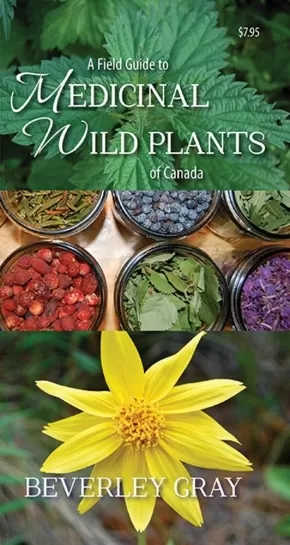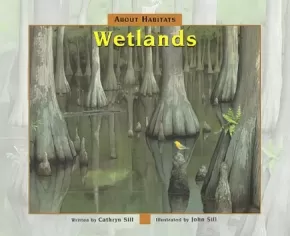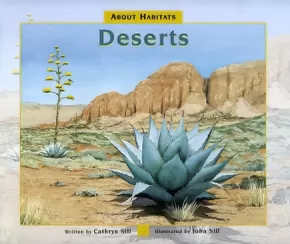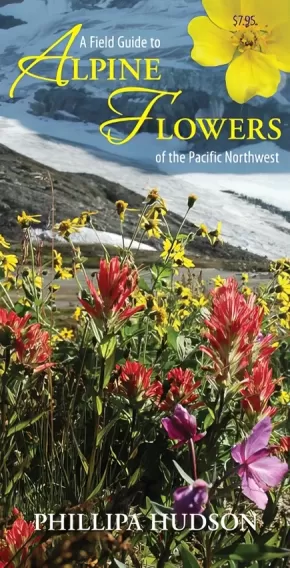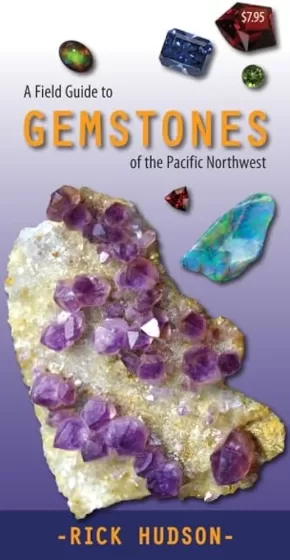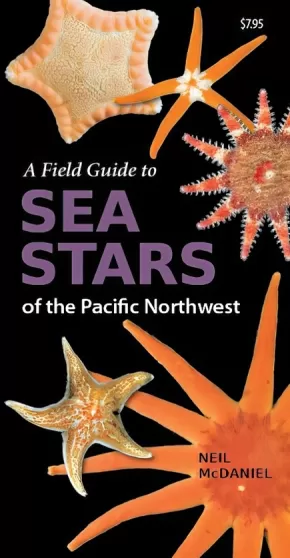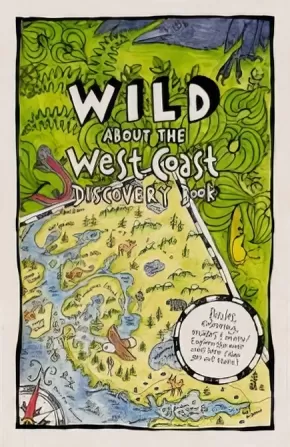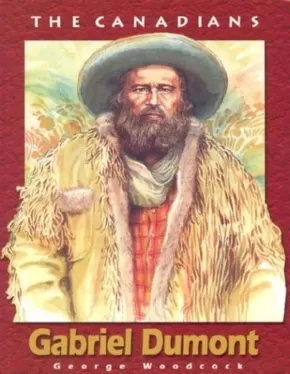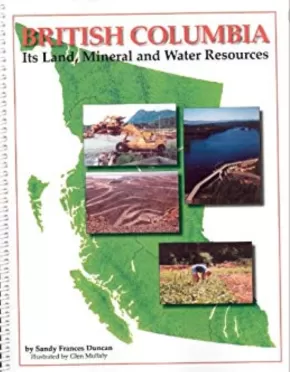Reference
Synopsis:
Nature heals! This compact field guide introduces readers to 26 common Canadian wild plants with extraordinary healing properties. Use arnica blossoms to heal muscle inflammation, improve digestion with chickweed and soothe a toothache with yarrow root--learning to identify and use wild medicinal plants is both fascinating and useful.
Each plant profile includes a colour photograph, identification and habitat information, as well as medicinal, cosmetic and culinary uses. Skilled herbalist Beverley Gray also includes tips on how to sustainably gather and safely use beneficial wild plants.
Additional Information
2 pages | 4.50" x 8.70" | 30 photographs | Pamphlet
Synopsis:
The About Habitat series for the very young highlights the defining characteristics of various habitats, including plant and animal life, using examples from around the world.
Award-winning author Cathryn Sill and her husband, noted wildlife illustrator John Sill, offer young readers a first glimpse into wetlands habitats. In simple, easy-to-understand language, this guide teaches children what wetlands are, what kinds of animals and plants live there, and how wetlands help maintain the delicate balance among Earth's environments. John Sill's beautifully detailed full-color illustrations reflect the diversity of wetlands topography—from salt marshes along the seacoasts to tropical mangrove swamps. The astonishing varieties of wetland plants and the birds, mammals, and fish that live there are also represented.
A glossary and afterword provide young readers with further fascinating details on the earth's wetlands, their creatures, and their conditions.
Awards
- NSTA Recommends – National Science Teachers Association, 2012 (US)
Reviews
“The artwork is stunning, filled with realistic details and a beautiful balance of colors. The format would work well as a read-aloud” ― School Library Journal
“This handsome book provides an attractive introduction to the variety, singular features, and great environmental importance of wetlands.” ― Booklist Online
“This book will appeal to all readers interested in habitats…clear, precise, and easy to understand…meticulous illustrations bring each scene to life…” ― Library Media Connection
“Each wetland has different plants and animals, but all are vital to help maintain the delicate balance among Earth’s environments. This book will answer the questions readers have about fragile and important wetland habitats.” ― NSTA Recommends
Educator Information
With simple text and language, and strong picture support (paintings), this non-fiction narrative teaches children what wetlands are and what kinds of animals and plants live there.
Recommended ages: 3-7
Series Information
This book is a part of the About Habitats series, which introduces children to specific habitats and their living and nonliving components.
Additional Information
48 pages | 10.00" x 8.50"
Synopsis:
This laminated guide features twenty-six native trees commonly found from Alaska to Oregon, providing common and Latin names accompanied by colour photographs of identifying features such as bark, leaves or needles, flowers, cones, seeds and fruit. Information on identification, range and an illustration of each tree's silhouette make it a snap to distinguish a shore pine from a western white pine or a trembling aspen from a paper birch. Also included are traditional uses and other interesting tree facts and lore. For example, did you know that yellow cedar can live up to 5,000 years? Or that the bigleaf maple flowers are edible? Next time you go for a hike, pay attention to the forest and the trees with one of these laminated guides slipped into your back pocket or backpack.
Additional Information
2 pages | 37.00" x 9.00" | color photographs and illustrations | pamphlet
Synopsis:
The About Habitat series for the very young highlights the defining characteristics of habitats, including the plant and animal life, using examples from around the world.
Award-winning author Cathryn Sill and her husband, noted wildlife illustrator John Sill, offer young readers a first glimpse into desert habitats. In simple, easy-to-understand language, this guide teaches children what deserts are, what kinds of animals and plants live there, and how certain species have adapted to the unique challenges of surviving in this harsh environment. John Sill's beautifully detailed, full-color illustrations reflect the diversity of desert topography—from the vast dunes of the Arabian Desert to the rocky Chihuahuan Desert in the southwestern U.S.—and the astonishing varieties of desert wildlife.
A glossary and afterword provide young readers with further fascinating details on the desert, its creatures, and its conditions.
Awards
- Best Children’s Books of the Year ― Bank Street College of Education, 2008
- Society of School Librarians International Book Awards (Honor Book, Science K-6) ― Society of School Librarians International, 2007
Reviews
"A great choice for beginning readers and for sharing aloud, this elegant blend of clearly presented facts and starkly beautiful paintings makes an informative introduction to a harsh environment and the adaptations made by the plants and animals that live there." — School Library Journal
"...this handsome book introduces deserts...some of the paintings focus on particular plants or animals, while others show broad landscapes, but all are well composed, delicately colored, and sensitively lit...accessible to very young children as well as older students, this provides an appealing introduction to deserts." — Booklist
"Cathryn and John Sill are all but unequalled in their particular style...luscious watercolors are beautiful, sometimes bordering on the spectacular." — Bristol Herald Courier
“Great for reading aloud, this simple but informative book introduces littler kids to arid landscapes for the first time.” ― Letter Blocks, Barnes and Noble Newsletter
Educator Information
With simple text and language, and strong picture support (paintings), this non-fiction narrative teaches children what deserts are and what kinds of animals and plants live there.
Recommended ages: 3-7
Series Information
This book is a part of the About Habitats series, which introduces children to specific habitats and their living and nonliving components.
Additional Information
48 pages | 10.00" x 8.50"
Synopsis:
This portable 8-fold guide is the perfect companion to Phillipa Hudson's easy-to-use Coastal Flowers of the Pacific Northwest, and features 112 spectacular photos of flowers found from the mid to alpine elevations on Vancouver Island and the Coast Mountains of the Pacific Northwest. Organized into a two-sided colour coded chart with a ruler printed on the back cover, this handy guide will aid in the quick identification of almost any flower one is likely to encounter in the higher realms of the Pacific Northwest, from exquisite yellow glacier lilies to elusive alpine pussy-toes. Labelled with both English and Latin names with descriptions of each species' distribution range and average plant height and flower size, this full-colour pamphlet is useful to budding botanists as well as more accomplished flower enthusiasts.
Additional Information
2 pages | 4.62" x 8.42" | 112+ Colour Photos | Pamphlet
Synopsis:
This full-colour, laminated field guide is your introduction to the beauty and wonder of the gemstones found in the Pacific Northwest, a region famous for its variety and quality of earth treasures.
From purple amethyst, carnelian, chalcedony, black and white onyx and emeralds to sodalite, sapphire and many more valuable stones--discover what lies in the rich geology just below your feet. This convenient brochure will help you to develop a keen eye for spotting gems in the rough and become more knowledgeable about local gemstones that are the equal of any in the world.
Additional Information
2 pages | 37.00" x 9.00" | colour photographs | pamphlet

Synopsis:
Sea stars are amongst the most common and conspicuous invertebrates that thrive in the rich waters of the Pacific Northwest, from northern California to southeast Alaska. Worldwide there are more than 2,000 different species, but no other temperate region has a greater variety and abundance of these colourful and often very large echinoderms, which are closely related to sea urchins, sea cucumbers, brittle stars and feather stars. An underwater photographer, journalist and naturalist with over 40 years of diving experience, Neil McDaniel provides many original field observations to accompany his remarkable images of these fascinating animals.
This durable, water-resistant 8-fold field guide describes how to identify more than 30 species likely to be encountered by beach walkers and scuba enthusiasts in the Pacific Northwest. It also provides intriguing details about their behaviour, including how they move about, hunt for prey, reproduce and avoid predators. It is an ideal companion for family explorations to the sea shore, an invaluable reference in any scuba diver's kit bag and a useful addition to the home library.
Additional Information
2 pages | 3.21" x 8.92" | Pamphlet
Synopsis:
"Mom, when are we going to get there?" Parents know this question all too well. Wild About the West Coast Discovery Book is a fun way to help pass the time in the car, on the ferry, at home, on the beach or even at school. This beautifully designed activity book is uniquely British Columbian with images from salamanders to slugs, wolves and waves, surfers, shorebirds and more. This activity book is much more than a colouring book and includes more than a dozen puzzles as well as space for children to record their favourite moments on the Coast. The art is detailed and visually appealing, created by artist Marion Syme, a graduate of Emily Carr School of Art and Design. Wild About the West Coast is fun, educational and makes a wonderful keepsake for visitors from near and far.
Synopsis:
Born in St. Boniface in 1837 of French and Indian parentage, Gabriel Dumont's childhood was spent in the Saskatchewan country, where he grew accustomed to the semi-nomadic existence of the Métis. These were the proud days of the Métis nation, when its people roamed freely throughout the Prairies. The most stable social institution was the annual buffalo hunt with its rules. When Gabriel Dumont became head of the Great Saskatchewan Hunt in 1862 the end of the nomadic lifestyle was already in sight.
As the buffalo herds dwindled, the Métis began to form more permanent settlements, but were alarmed when their pleas for recognition of their land rights were ignored by Sir John A Macdonald's government. Dumont appealed to Louis Riel, leader of the Red River Rebellion.
Riel spoke up for the Saskatchewan Métis, but their petitions were ignored. In 1885, the Métis took up arms against the government forces. Dumont spurred the outnumbered rebels to several victories. After the Métis defeat, Dumont fled to the United States where he spent time with Buffalo Bill's Wild West Show until an amnesty was declared and he was able to return to his home.
Educator & Series Information
This book is part of The Canadians Series.
Recommended Ages: 10-13
Additional Information
64 pages | 6.50" x 8.50"
Synopsis:
This exciting text was developed specifically for the BC Science and Social Studies curricula. It is the only comprehensive resource available which provides all the content necessary to learn about B.C.'s living and non-living resources. And best of all it has been developed in B.C. by B.C. educators and has been recommended by the BC Ministry of Education.
Students will learn:
- about land, mineral and water resources; the ways we use the resources and the effects of using them.
- how we use the land for growing crops, for raising animals and hunting wildlife and for forestry, tourism and recreation.
- that B.C.'s mountains are full of minerals and how this abundance of minerals makes mining B.C.'s third most important industry.
- why water is an important resource in B.C. for drinking, hydroelectric power, recreation, industry and as a food source.
- the uses, benefits and economic impact of BC's resources; from traditional First Nations to present day.
- the evolution of the technology used in resource development and use, environmental issues, sustainability and careers.
Special Features of this resource include:
- Before You Read - encourages students to access their knowledge of the subject before reading for information.
- Looking Ahead - provides an overview of the content of the chapter.
- Story Profiles - present information in an alternate format that students will find interesting and entertaining.
- What Do You Think? - challenge students to think about and debate issues.
- Charts and graphs - present statistical information in a graphic format.
- Clipboards - highlight interesting information.
- Looking Back - summarizes the content of the chapter.
- After You Read - suggest activities that review or extend the content of the chapter.
- Key words are highlighted the first time they appear in the text. These words are defined in the glossary.
Teacher's Guide available.

